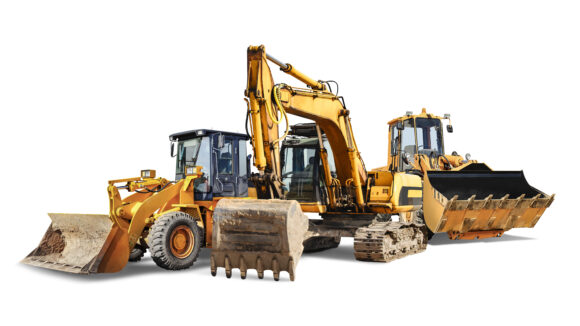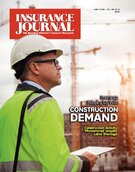The construction sector accounts for the largest premium share when it comes to workers’ compensation premium in National Council on Compensation Insurance (NCCI) states but improved safety measures and employee tenure throughout the sector has led to decreasing frequency, declining at an annual rate twice as large as all other industries.
That’s according to data from NCCI’s presentation, Industry Drill Down — The Next Level, during the 2024 Annual Insights Symposium (AIS) held in May.
“Trends by industry are important because carriers specialize by writing insurance in specific industries where they have deep expertise into the risks that they write,” said Sandra Kipust, senior practice leader and actuary at NCCI. NAICS codes reported in NCCI’s policy data can provide granular industry-level analysis.
Construction (20%), manufacturing (17%), trade (14%) and transportation and warehousing (9%) make up 60% of NCCI premiums.
NCCI’s estimates of overall trends assume this mix, but companies write their own unique mix of business. So, while trends are accurate for the industry in aggregate, they may be less appropriate for individual companies, she said.
“For example, 20% of workers’ comp premium is written in the construction industry,” Kipust said. One company may be very focused and write the majority of their business in construction. Then, another may write business across a spectrum, including manufacturing, wholesale trade, healthcare, etc., similar to the industry average. “These two hypothetical companies will have very different trends.”
Claim Frequency
Claim frequency has returned to the long-term decline observed for decades, Kipust said.
Many factors impact frequency, but one key factor is employment. Increases in newly hired workers can cause a higher rate of frequency. Other considerations include more extended hours, expanded roles and less-qualified hires, all of which can place upward pressure on frequency. Employers may also lose more qualified workers to other opportunities in a tight job market.
Trends from 2015 through 2022 show that construction and manufacturing frequency is lower than average, while transportation and warehousing, along with trade industries, are higher. However, overall frequency has declined for all industries.
But, when numbers are split into pre- and post-COVID years, the transportation and warehousing and wholesale trade industries show an increase in frequency in the post-COVID period, possibly explained by variability in employment.
Transportation and warehousing employment increased by 4.8% between 2019 and 2022, driven by the demand for online shopping and package delivery.
Construction premium is largely driven by specialty trade work, such as plumbers, roofers and electricians. Coverage for these types of workers represents 70% of the industry premium, said Amanda Glish, director and actuary at NCCI.
The remainder of the premium is divided among building construction, and heavy and civil engineering construction.
The frequency of lost time in construction has been steadily declining since 2015. Still, unlike all industries that experienced mild volatility over those years, construction was resilient to the indirect pandemic effects and experienced consistent yearly declines, Glish said. When directly comparing annual changes year over year for construction versus all industries, construction frequency declined similarly or more than that in all industries every year. When the changes are combined across years, construction lost-time frequency declined nearly twice as much (-26%) as across all other industries (-15%).
Claims decreased across all claim size groups:
- $0 to $25K: -3.9%
- $25K to $100K: -3.5%
- $100K to $500K: -3.8%
- Over $500K: -3.1%
Frequency across policies based on size also decreased between 2015 and 2022. For small policies up to $50,000, the average annual change was -4.6% year over year. Medium policies, $50,000 to $250,000, saw a change of -4.3%, while large policies, those over $250,000, saw a year-over-year change of -3.4%.
Glish said that the consistency in declining frequency trends across all policy groups points to a focus on safety.
Employment
Construction is an industry that has been having higher employer growth than many other industries. While numbers dropped in 2020, construction employment didn’t decrease as much as other industries. From 2016 to 2023, construction employment averages a 2.8% increase across all years.
How do these new hires impact frequency?
In construction, Glish said there is a consistent gap between the hires and separation rates. In recent years, the number of hires and separations has been lower than it has been in the past, meaning fewer people are leaving their construction jobs, and there is reduced need to hire replacements.
“So even though employment is growing, there is less turnover,” Glish said. “And worker tenure in construction may actually be increasing rather than decreasing. And when employees become more tenured, this can actually have a favorable impact on frequency.”
Severity of Claims
While construction has lower frequency, the nature of the work means that it has higher than average severity. “And total lost time severity for claims in construction is nearly 50% more than the all-industry average,” Glish said.
Burn claims are the most severe, with an increase of 12% on average from 2015 to 2022. While the claims are large individually, they are manageable because they comprise only 2% of total counts. Other causes of high-severity claims during those years include motor vehicle accidents (+3% annual severity change; 6% claim share), slip and fall accidents (+3%; 32% claim share) and strike injuries (+3%; 13% claim share).
Other Industry Trends
Recent upticks in transportation frequency are driven by worsening frequency coming from couriers and messengers (local delivery drivers), correlated with unprecedented employment growth since 2019. However, these are typically claims of lower severity.
Retail trade is the only industry with no consistent decline in frequency. This flatter trend is observed throughout retail, which could indicate a change in the type of risk and job activity (e.g., typical “cashier” duties may be replaced with other higher-risk activities like gathering items for curbside pickups).
While recent manufacturing employment shifts occurred across job types, frequency results remain favorable, suggesting that frequency is resilient to within-sector employment mix changes in the manufacturing industry.
View the full presentation at Industry Drill Down–The Next Level.
Topics Trends Construction
Was this article valuable?
Here are more articles you may enjoy.



 Big ‘I’ Report: Independent Agency Channel Placed 62% of Premiums in 2023
Big ‘I’ Report: Independent Agency Channel Placed 62% of Premiums in 2023  Zurich to Buy AIG’s Travel Insurance Business for $600 Million
Zurich to Buy AIG’s Travel Insurance Business for $600 Million  Let Good Adjusters, Not Expensive Lawyers, Make the Difference on Claims, CEO Says
Let Good Adjusters, Not Expensive Lawyers, Make the Difference on Claims, CEO Says  ‘Great Resignation’ Enters Third Year as Workers Embrace AI, Upskilling, PwC Says
‘Great Resignation’ Enters Third Year as Workers Embrace AI, Upskilling, PwC Says 


